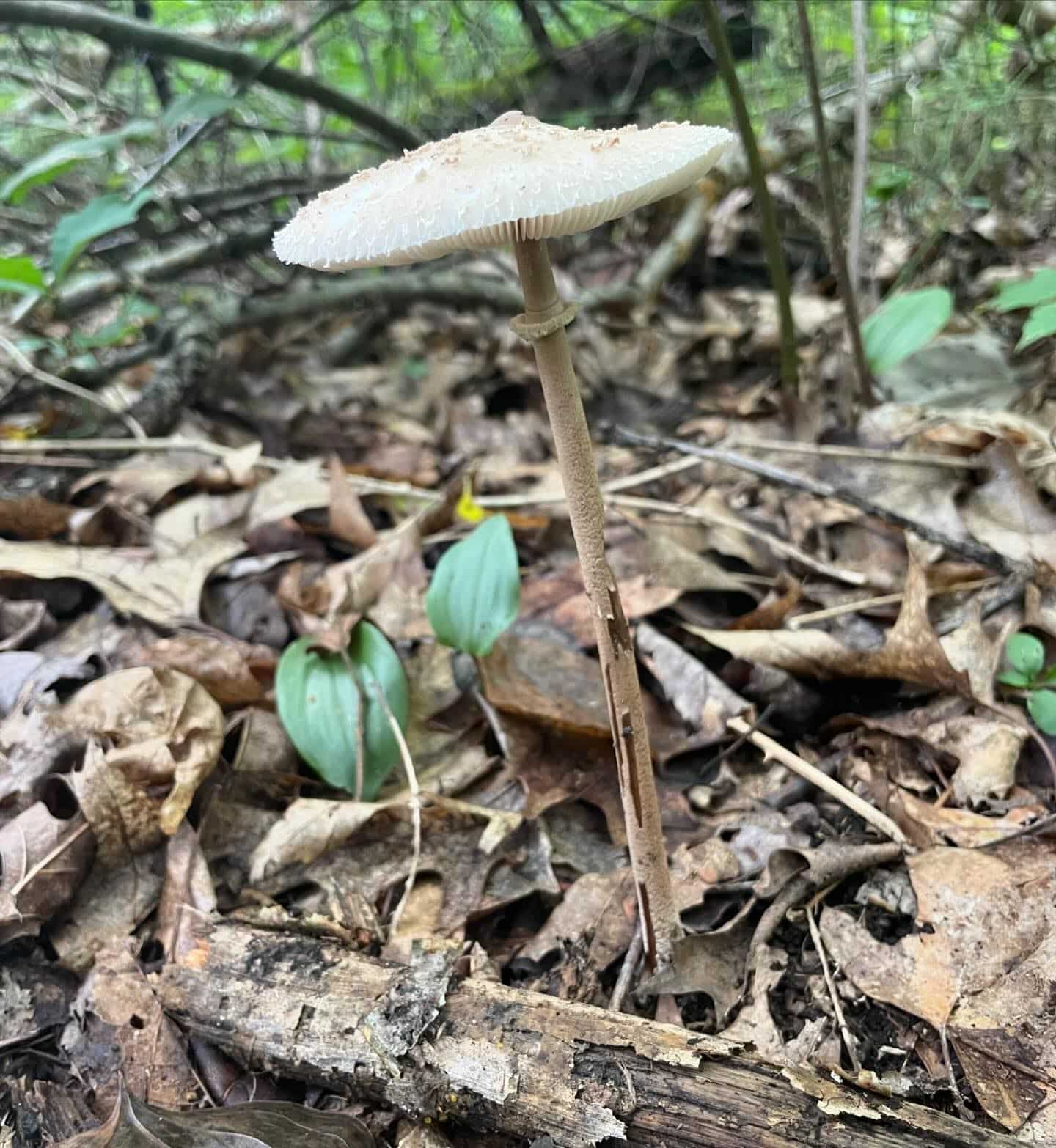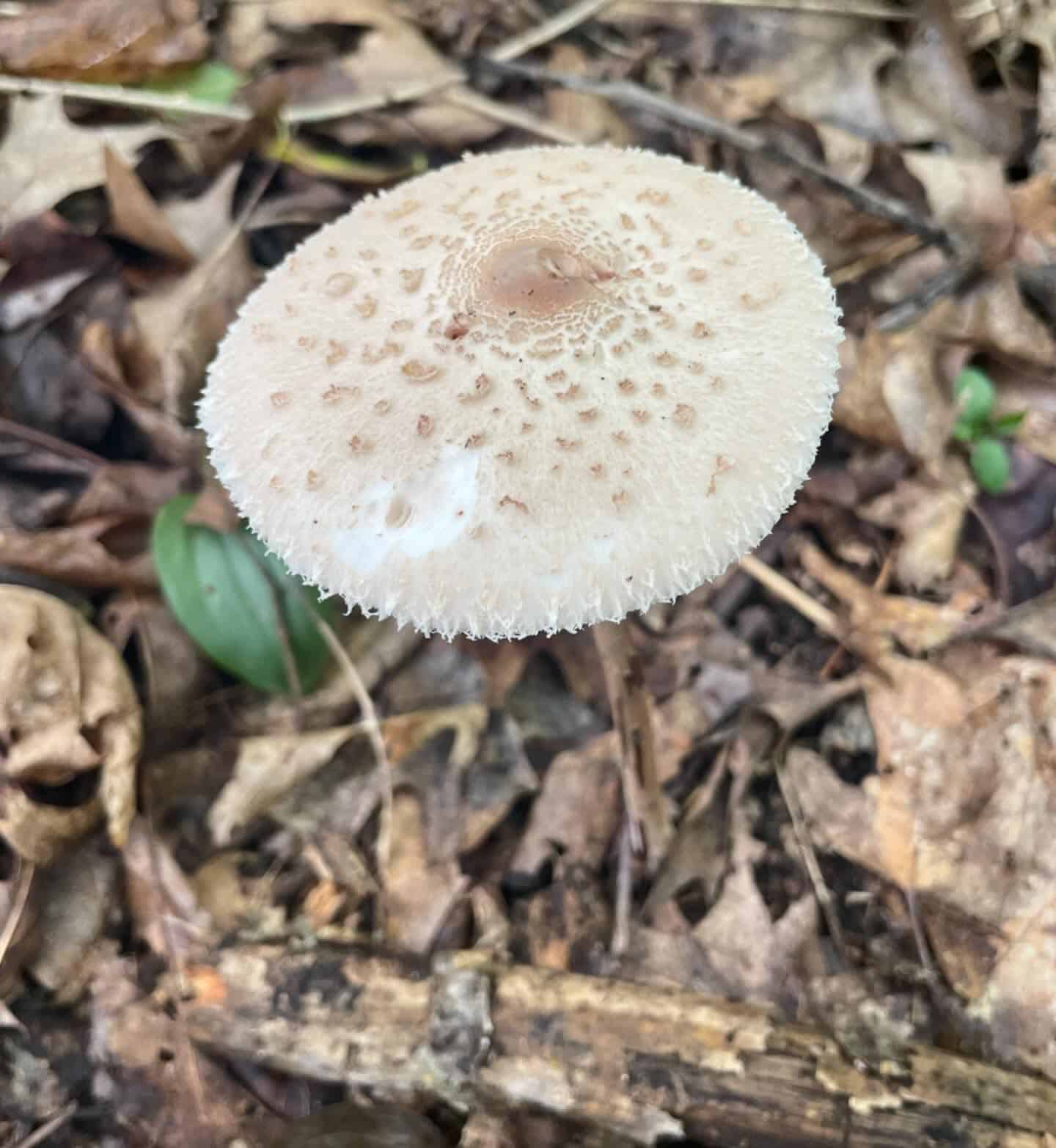Page Created by Connecticut Foraging Club
Upcoming Events | Meet the Instructors | Plant Archive | Mushroom Archive
----------------
Upcoming Events | Meet the Instructors | Plant Archive | Mushroom Archive
----------------
The Parasol mushroom (Macrolepiota procera) is an edible mushroom that fruits August-October. It can be found in open woodlands near conifers or hardwoods or on lawns. The parasol mushroom is saprobic.

The cap has scattered brown scales and develops a rounded bump on the center. The stem is slender, tall, and bulbous at the base. It is covered with small brown scales. The stem has a double-edged ring. Spore print is white.
Mature parasol mushroom caps have a sweet scent and flavor that is compared to maple syrup. The caps can be sautéed or added to soup. The stem is usually discarded due to being too tough to consume.

Small parasol mushrooms should not be consumed as they can be easily confused for other species. There should be no green aspect to the gills, and one should be sure that the spore print is not green.
The parasol mushroom must be differentiated from the toxic Shaggy Parasol (Chlorophyllum rachodes) which has a stockier stem and flesh that turns red when cut. The stem of the Shaggy parasol lacks the small brown scales.
The parasol mushroom must also be differentiated from potentially deadly Amanita mushrooms. Some Amanitas have lighter flakes on their caps compared to the cap color, whereas the parasol mushroom has darker flakes on a lighter cap color.
--
Written by Amy Demers, founder of the Connecticut Foraging Club. To learn more about foraging in Connecticut, check out our upcoming classes.






